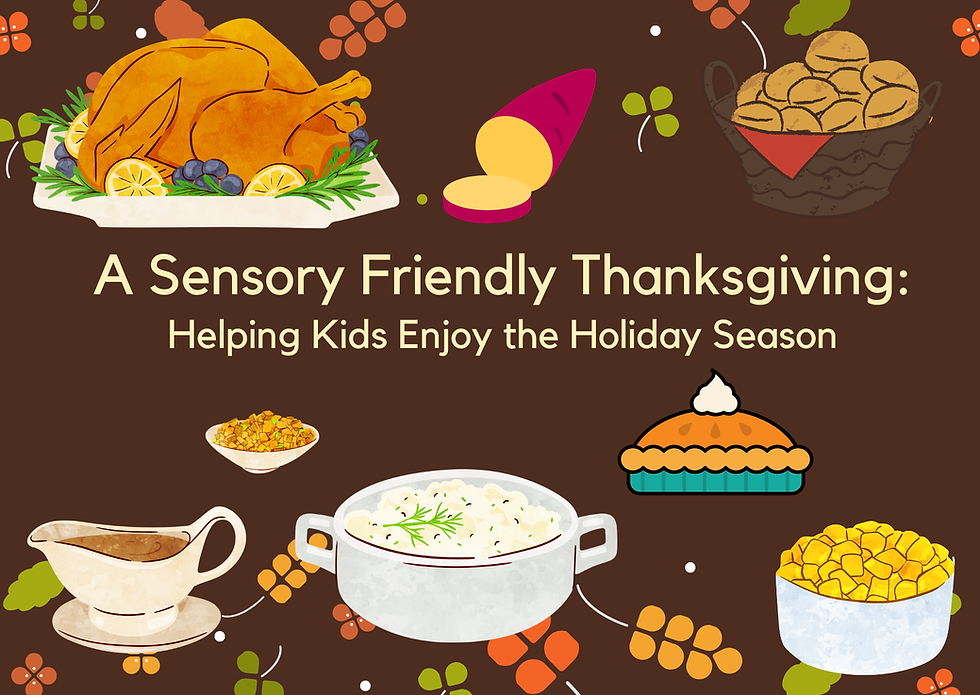Leaps & Bounds Speech Team
- Lisa Cooseman, OTR/L, MS

- May 3, 2021
- 4 min read

We are so excited about our growing speech therapy team! We wanted to share a little bit about how our speech therapists are helping kids at Leaps and Bounds.
Our speech language pathologists (SLPs) work with kids in the following areas:
Articulation
Oral motor/ feeding
Expressive language
Receptive language
Dyslexia/ literacy
Dysarthria
Dysfluency
Social skills
Kids may not qualify for therapy in other settings, but are still be able to receive services at Leaps and Bounds. Our office will contact your insurance plan and help you determine what is allowed by your particular plan and help you determine your best options. Leaps and Bounds often collaborates with doctors, schools, other professionals and community agencies to assure a comprehensive approach for each individual child.
One of the benefits of therapy at Leaps and Bounds is our understanding of how the sensory systems can impact and facilitate language. Our therapists use movement as well as other sensory experiences to facilitate language development. The body’s movement and language systems are neurologically connected. Our bodies need movement to learn. Kids are engaging in speech therapy while swinging, climbing, jumping and exploring which makes it fun and motivating too.
Speech
Articulation and phonology are common areas that SLPs work on. Articulation refers to the way we say our sounds. Children can substitute one sound for another, distort a sound, or leave off a sound. Our therapists teach the child to use the correct tongue and lip positions, airflow, and voicing. Our therapists find fun ways to incorporate the repetition necessary for progress in this area. Phonology addresses the patterns of errors, and there are specific research-based approaches we use to decrease these patterns. Articulation and phonology are what people traditionally think of when they hear the words “Speech Therapy.” However, speech-language pathologists address so much more than just speech!
Language and Social Skills
We also see kids to work on language. Language is a large umbrella category for semantics, syntax, and morphology. Semantics refers to word meaning, so therapy targets defining words, understanding the function of objects, labeling items, and categorizing. At a higher level, we target understanding and using figurative language, defining multiple meaning word pairs, and stating synonyms or antonyms. Syntax refers to grammar and the rules of word order. Morphology refers to the word endings, such as –ing or –ed. Our speech therapists target the following skills for syntax and morphology: addressing word order of sentences and questions, understanding present, past, and future tense, understanding irregular plurals, using negatives, and including all words in a sentence.
Pragmatics, or social language, is language usage in context. This includes using language for different purposes (like greetings or requests), changing language according to the needs of the listener, and following the rules of conversation (like taking turns, staying on topic, and making eye contact). SLPs help individuals develop their social self-awareness, perspective taking, and social self-management skills to learn to relate to others, to work effectively as part of a team, and to learn effectively as part of a group.
Literacy/Written Language
Our Speech-Language Pathologists also diagnose and treat a variety of written language disorders, including dyslexia, which impact literacy skills. Speech Pathologists can evaluate an individual to determine the cause of literacy concerns and provide appropriate treatment. Treatment may include improving general language skills such as vocabulary, inferences, and predictions within a story. It may also include treating aspects of language to include grammar and word parts. Most frequently intervention for literacy concerns includes in-depth treatment of the phonological system (the ability to process and manipulate sounds). Intervention will also include systematic instruction in sound-letter correspondence, sight word knowledge, and the "rules" of reading and spelling (encoding and decoding).
Augmentative Communication
Speech is the most common means of communication. There are times, however, when speech is not functional to meet an individual’s complex communication needs. Augmentative-alternative communication (AAC) can supplement communication and encourage existing verbal speech for individuals with severe speech or language problems. AAC includes all forms of communication (other than oral speech) that are used to express thoughts, needs, wants, and ideas. We all use AAC when we make facial expressions or gestures, use symbols or pictures, or write. SLPs can help provide special augmentative aids, including low technology (e.g. communication books and boards) and high technology systems (e.g. devices with voice output) to help kids express themselves. This may increase social interaction, school performance, and feelings of self-worth. SLPs also help children, their communication partners, teachers, parents, and caregivers to understand, use, maintain, and update personalized AAC systems.
Click here to read a recent Therapy Spotlight on the success one of our our previous kiddos had with their AAC device.
Oral Motor and Swallowing
A less commonly known area within the scope of practice for SLPs is oral motor movements and swallowing. Our therapists work on lip and tongue strength in order for children to produce sounds correctly. SLPs also work on swallowing food and liquid from the time it enters a child’s mouth to the time it enters his/her stomach. For example, if a child always coughs after he swallows water, the SLP will work on strengthening the muscles in the throat and give strategies to prevent the water from getting into the lungs.
If you have any questions regarding speech/ language therapy for your child, please contact our office at 636-928-LEAP(5327) or click the link below to get started.




Comments